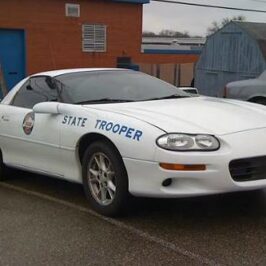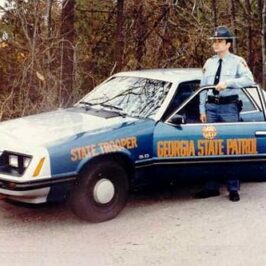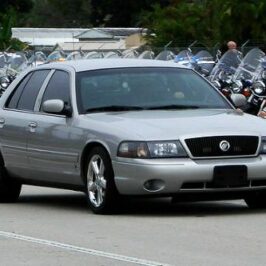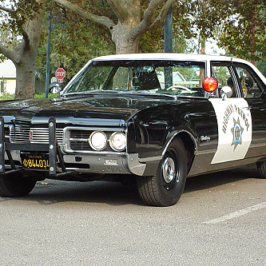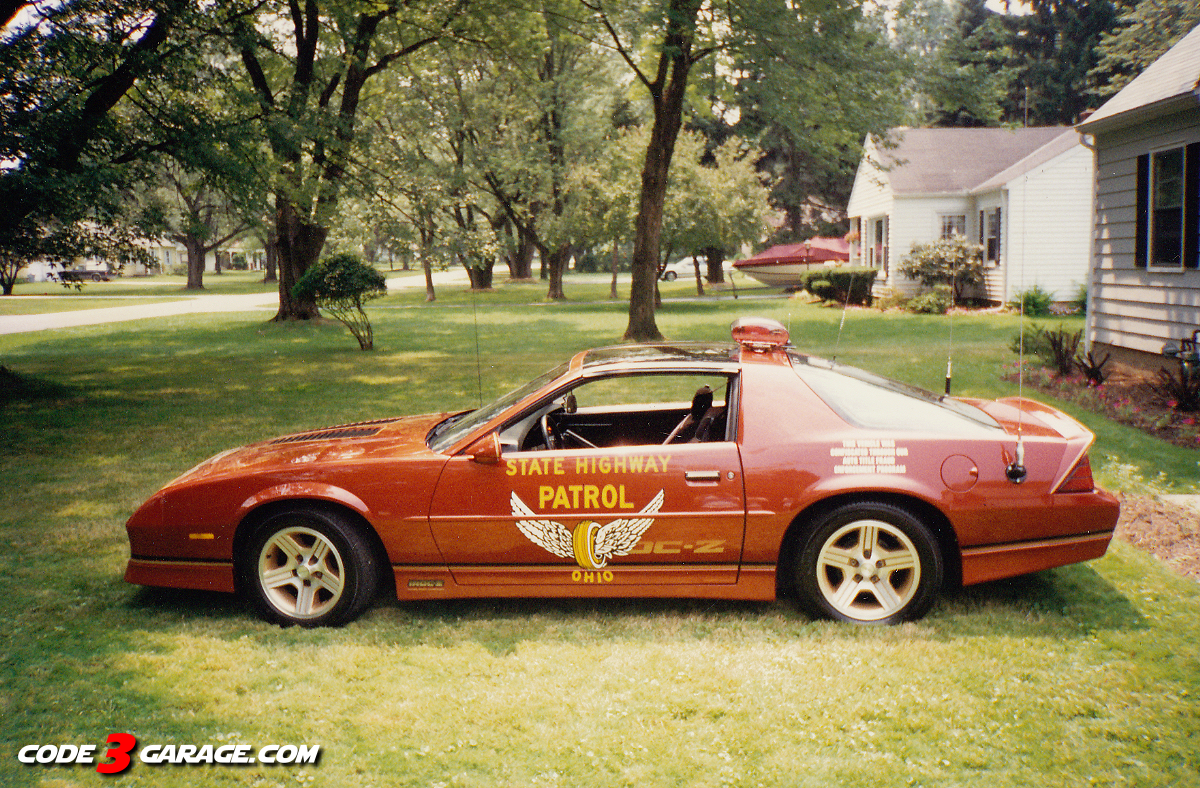
While officers with the neighboring Michigan, Indiana, Pennsylvania, and Kentucky State Police got the opportunity to drive Special Service Package Ford Mustangs in the 1980’s and 1990’s, Troopers with the Ohio State Highway Patrol did not. However, the Ohio State Highway Patrol did come in to possession of some Chevy Camaro’s that had been seized through its Auto Title Fraud Unit. They received Ohio State Highway Patrol markings and a light bar, and were used in parades and other public relation duties. The exception would be unit# 2078.
This Camaro went to the Troopers assigned to Post 18 patrolling IS-480 in greater Cleveland in the early 1990’s. The Highway Patrol had begun patrolling IS-480 at the request of the Cuyahoga County Chiefs of Police Association. The I-480 project (Post 18) only lasted a few years before it was shut down. It ran out of the Highway Patrol’s investigative unit on Broadway Ave in Garfield Heights. There were (3) Troopers and (1) Sergeant assigned to a day shift (6am-2pm) and afternoon shift (2pm-10pm). The (6) Troopers and (2) Sergeants were supervised by the Staff Lieutenant in charge of the investigative unit (Cleveland Operations). Of those Troopers, only (2) of the Troopers from the afternoon shift would actually use the car for patrol duty. I was one of them. These pictures were taken at my residence at the time. The car was a little awkward to get in and out of wearing a duty belt, and not as comfortable as my full-size Crown Victoria. But it was fun to drive, and a unique opportunity.
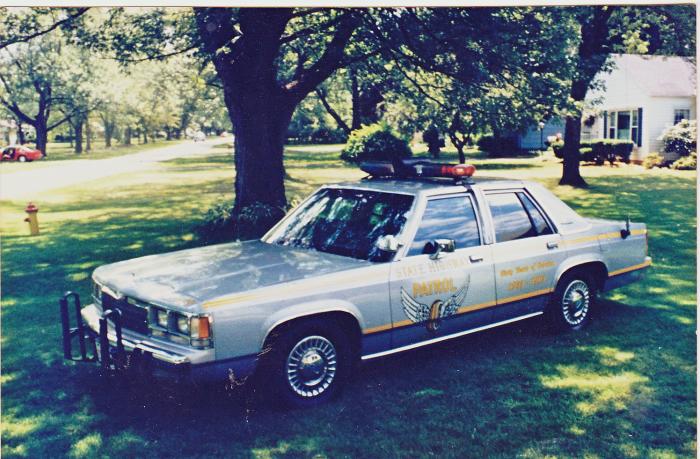
(My Crown Vic – Only Post 18 cars had the push bumpers)
Generally I would drive the Camaro for half of the shift, and then switch back to my Crown Vic so the other Trooper could drive it. The 3rd Trooper on our shift owned a Camaro, and had no interest in driving this one.
As a Highway Patrol Cadet in the academy, you have to go through and pass a driving program before you can graduate. When we received this Camaro, an instructor from the Highway Patrol Academy came to Cleveland, set up a course in a huge parking lot, and ‘trained’ us on how to drive the Camaro. The wonderful world of civil liability. If anything happened, the State of Ohio could say that we were trained to drive the Camaro.
We were the only Ohio State Troopers that were actually ‘trained’ to drive these Camaro’s on duty, and probably the only ones in the state to actually use one for enforcement purposes.
Street Racers:
Other than speeding tickets and a DUI arrest, one of the most interesting arrests I made while driving this Camaro came while sitting at the window of a Taco Bell drive thru. I had just got my food and heard the sound of two cars approaching the area at a high rate of speed. After they shot past the Taco Bell I pulled out and caught them 10-blocks later pulling in to a Burger King parking lot. People in greater Cleveland didn’t understand the powers and duties of the Highway Patrol. Many of them thought we only had jurisdiction on the interstate. So getting busted for drag racing on a city street by a State Trooper in a Chevy Camaro came as a surprise. The (2) gentleman took the ticket to court and tried to argue that they weren’t racing. Their attorney even tried to make the case that the loud noise I heard was a gear drive in the engine of one of the cars, and not because they were speeding. He even brought in a Summit Racing catalog that listed the gear drive as ‘noisy’. Using a speed shops catalog wouldn’t seems like the best defense angle for this case. I actually had a Ford 302 with a gear drive in it (a gear drive is a set of mechanical gears that replaces an engines timing chain. They typically make a whining sound), so I know what they sound like. It doesn’t take special training to recognize (2) cars street racing. Any conscious person can spot it. The judge listened to all of the testimony and then found them guilty. The judge went on to say that law enforcement officers don’t always get a chance or have the time to grab lunch, and that it was the courts opinion that I wouldn’t have ignored my lunch and chased these (2) down if they weren’t in fact drag racing. How’s that for a common sense judgement? After all of that it came down to the fact I was getting Taco Bell. In case you’re wondering, I didn’t physically arrest these (2) or tow their vehicles. I just issued them a citation with a court date, and sent them on their way.
More Photos
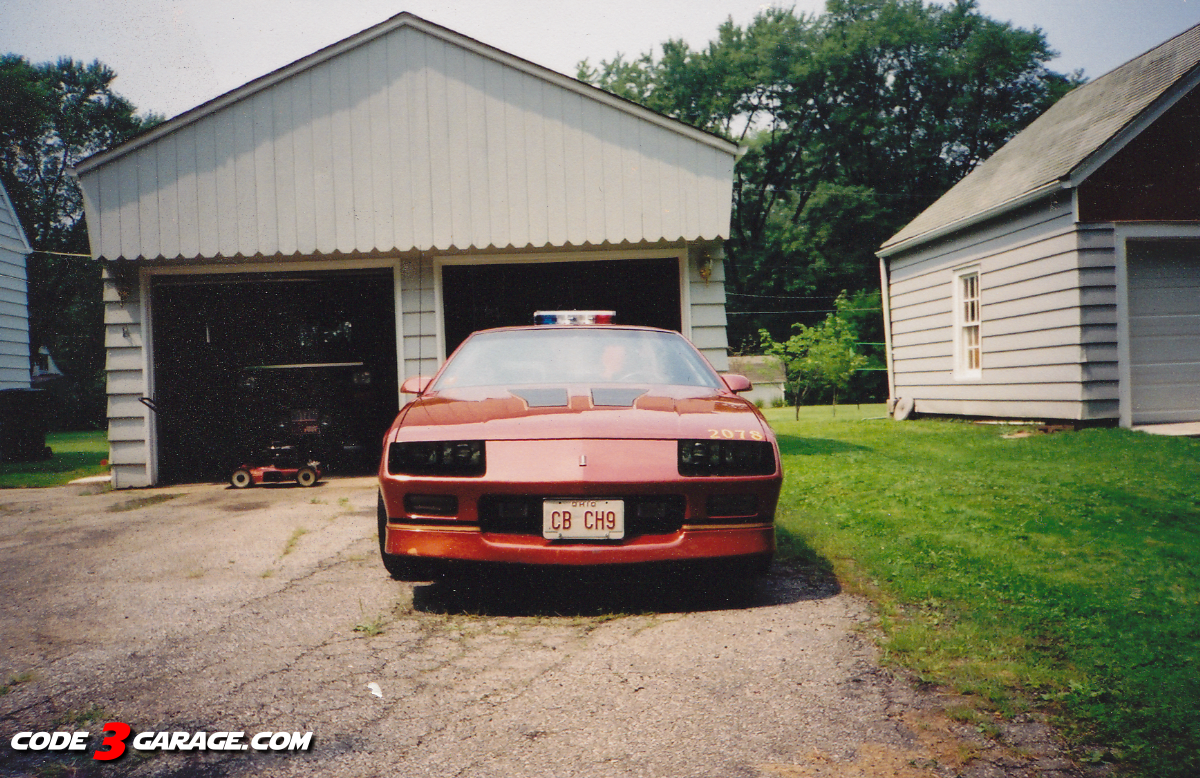
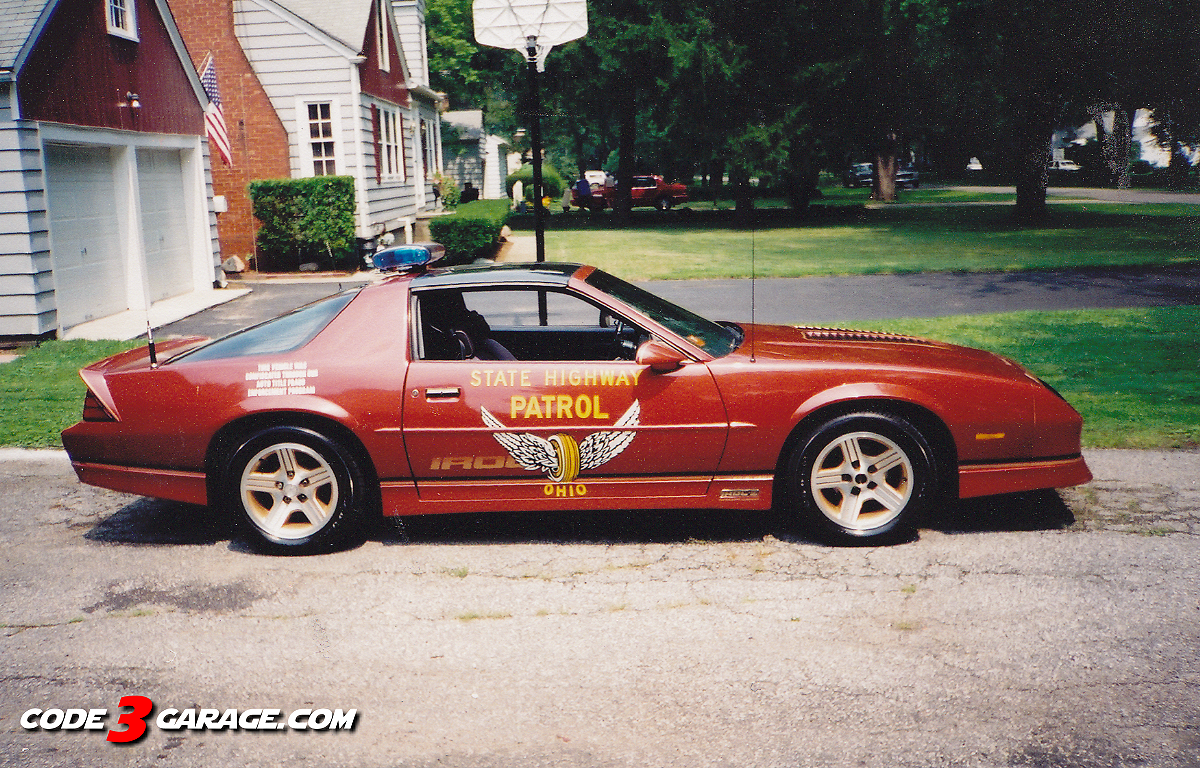
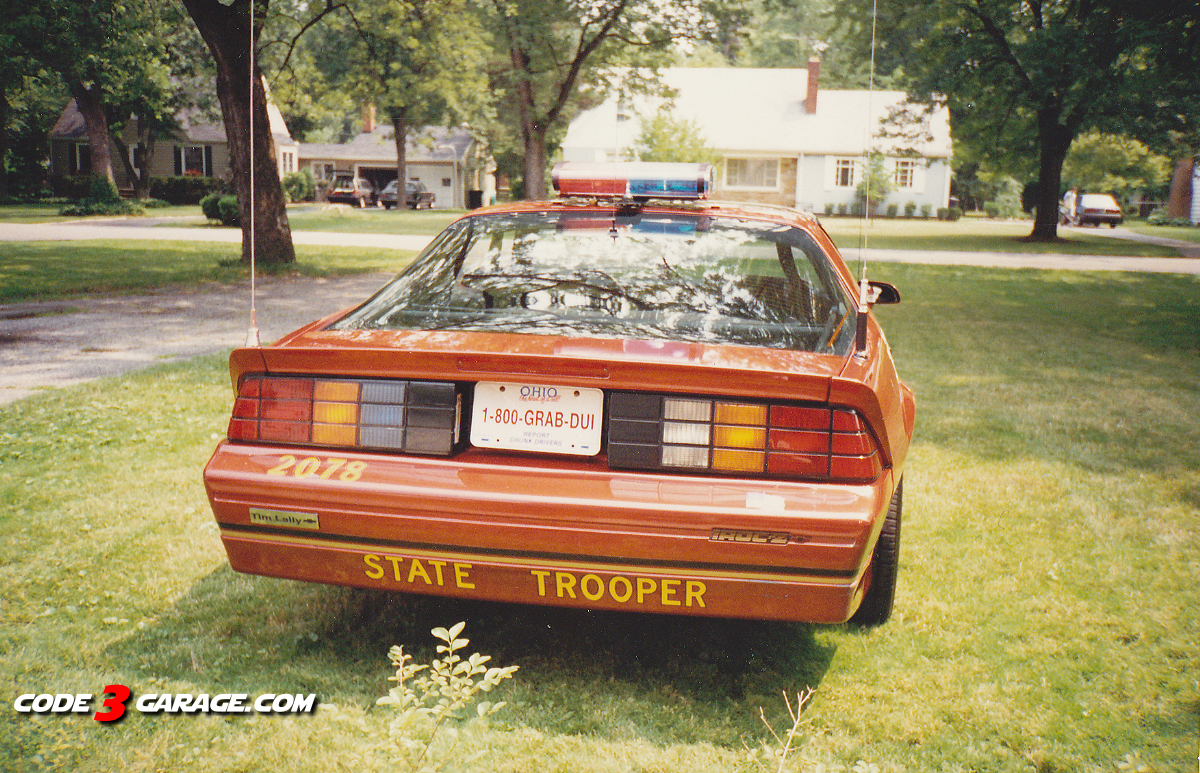
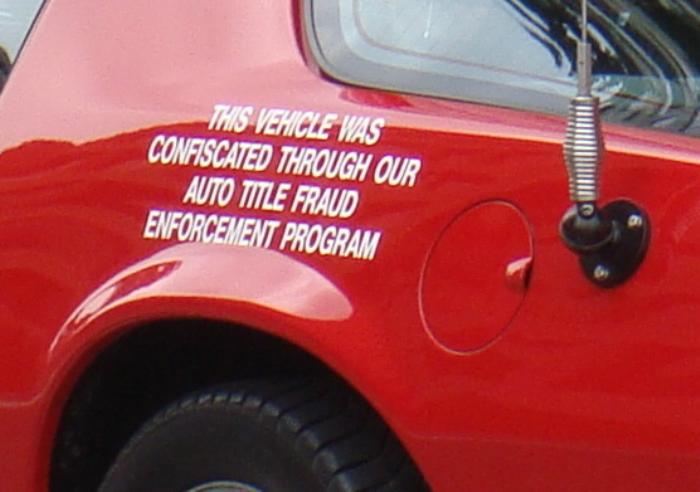
Anatomy of a Highway Patrol Camaro
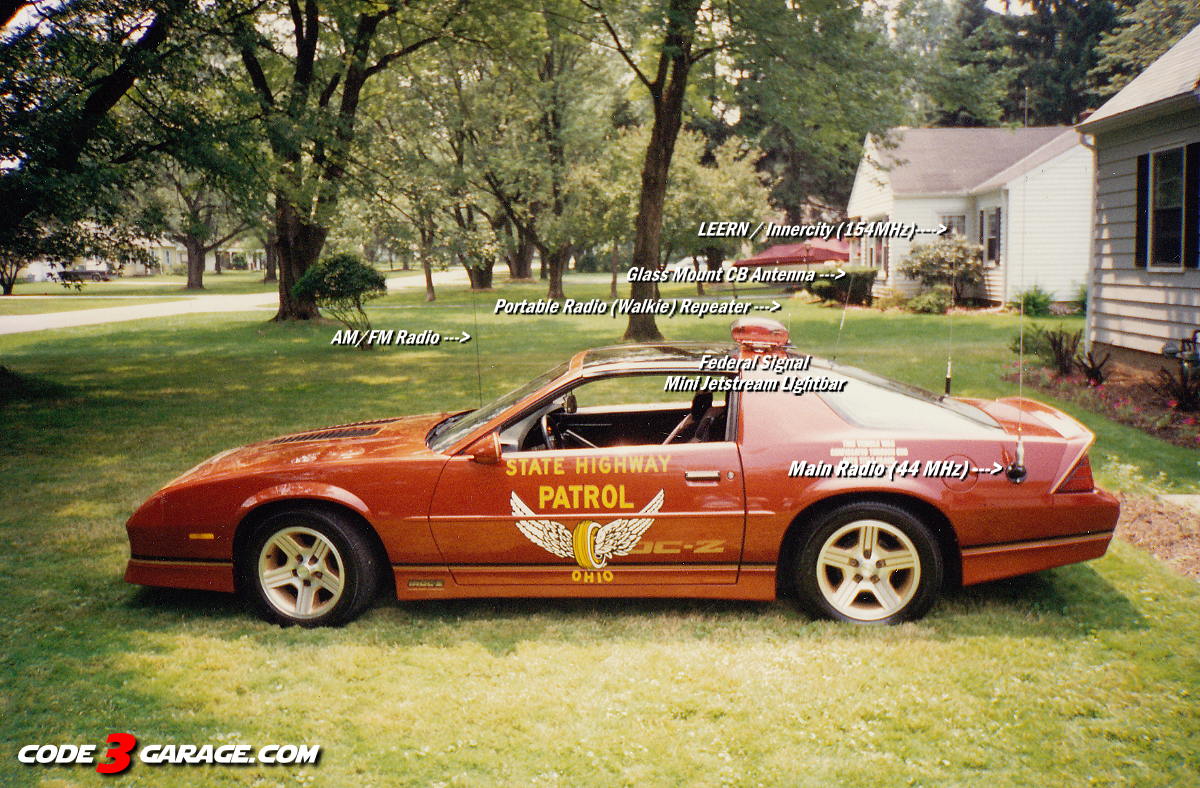
This IROC-Z Camaro was a seized vehicle, and not one of the police package Camaros offered by Chevrolet.
In addition to the Highway Patrol markings it received:
Antennas:
The little antenna behind the lightbar was basically a repeater antenna for the Mobile Radio Extender (MRE). These were the portable radios that we carried on our belts. When we keyed the microphone on our portable radio, it broadcasted the signal to that little antenna, and the car broadcasted back to the patrol post, or other cars through the main radio.
The large antenna mounted on the divers side rear fender is for the main radio that operated on the 44 MHz frequency.
The cellular looking antenna on the rear window was a glass mounted CB antenna.
The other large antenna on the passenger rear of the car was for the LEERN / Innercity radio frequencies.
Lightbar:
The lightbar was a Federal Signal Jetstream. It had (1) rotator at each end, and (2) takedowns in the center. These take downs worked just like the ones used in the Federal Signal Jetsonic’s on the Crown Victoria’s. The takedowns would either stay lit, or alternate flash depending on which position the switch was in.
Anyone familiar with the Highway Patrol’s Federal Signal Jetsonic lightbars of this era knows that there’s a small blue light on the back of the speaker housing. If you look at the left rear backup light, you’ll notice it has a blue hue to it from the blue ight that was concealed inside of the housing.
The Camaro did not have any other emergency lighting.
Radios & Siren:
GE Mastr II 2-way radio head that controlled the actual radio mounted in the trunk. This radio system could operate on the patrols 44 MHz frequency as well as LEERN (Law Enforcement Emergency Radio Network) and Innercity which operated in the 154 MHz range. The brownish tan GE Master II radio head case had been painted black, and it appeared that the Radio Tech’s wanted to give it a ‘newer’ look. The head, a Federal Signal PA300 siren, Uniden PC33 CB Radio, and a Code 3 / Galls style lightbar control box was mounted on a metal ‘tree’ mounted to the passenger floorboard.
Radar:
This car did not have a radar unit in it. Most of the speed enforcement we did on IS-480 was with laser.
Shotgun:
The 12-gauge Remington 870 shotgun had a regular stock instead of the metal folding stock used in other cars, and was mounted to the drivers door.

